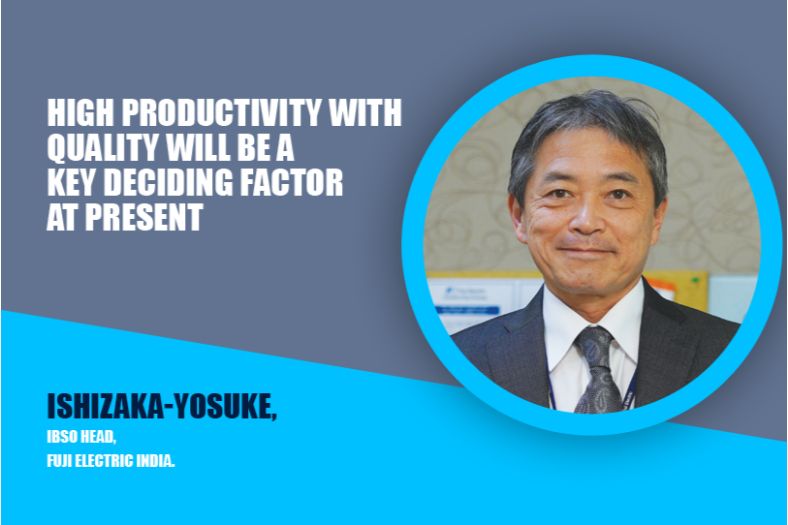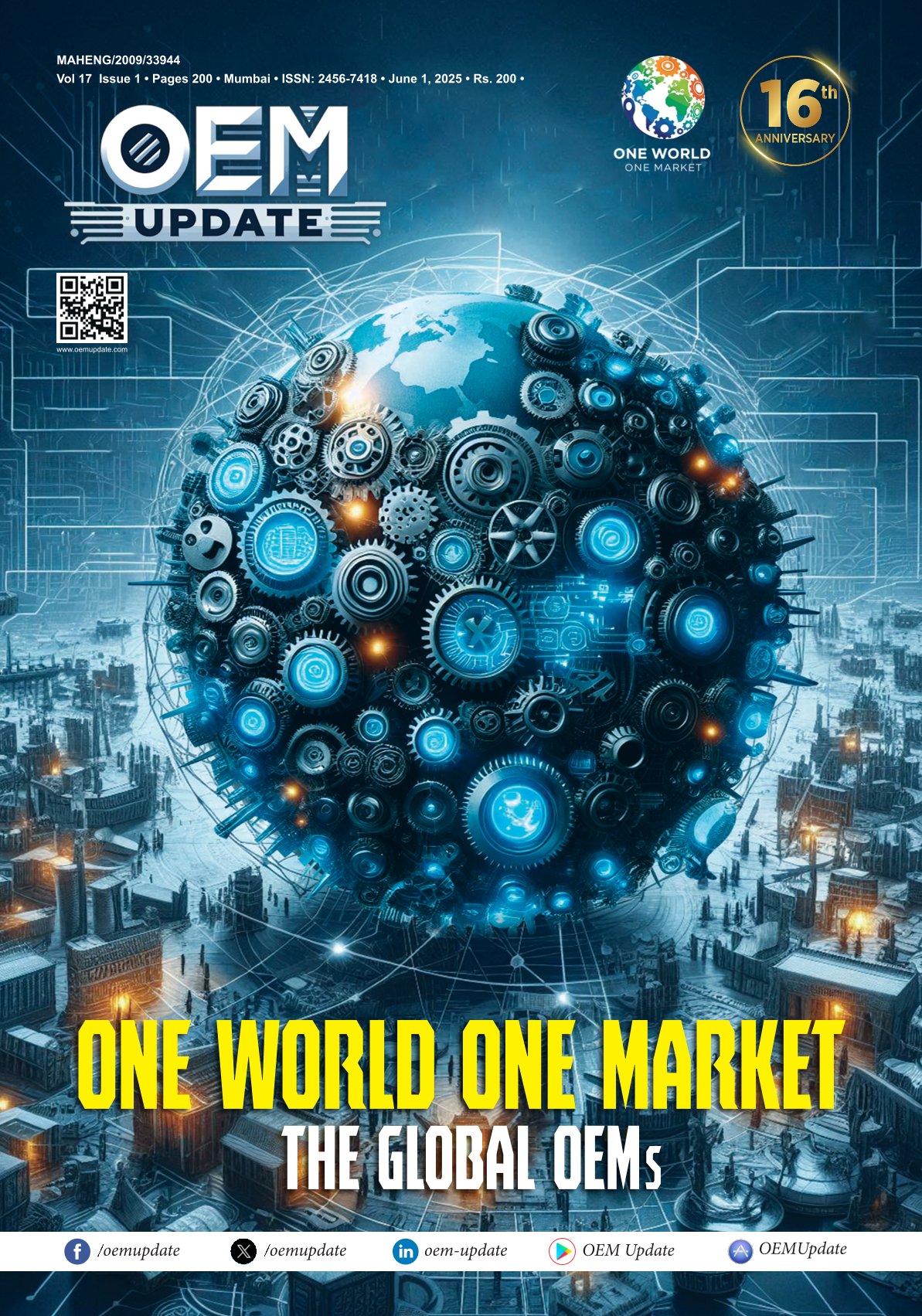High productivity with quality will be a key deciding factor at present
By OEM Update Editorial November 30, 2021 7:54 pm IST
Digitalisation has brought a lot of opportunities, and to seize them, we need to adopt it right now to succeed.
What is your perception about the automation market with increasing digitalisation?
In this digital age, being competitive is driving the companies to adopt process automation to stay relevant in the market, and to become competitive and flexible can only be accomplished by leveraging the latest technologies.
Therefore, automation is finding increasing acceptance, as industries have started leveraging the power of IoT devices to access, analyse and respond to crucial commands. Expectations have developed concerning the digitalisation of industry and its potential to increase manufacturing performance. We see more and more organisations have started embracing this approach to optimise efficiency, and to reduce operational costs.
However, companies across India are yet to explore automation and IoT in their manufacturing facilities. Hence adoption is going to be the focus for most of the companies for the next few years.
How to evaluate the demand for automation in bridging the technological gap in Indian industries? The Indian economy is going through a phase of rapid industrialisation. Government initiatives like ‘Make in India’ are supporting the growth of new industries and production facilities in India. This is creating a huge demand for automation and robotics and ensuring a move towards making India a global manufacturing hub.
Post pandemic, we observe that the demands for automation from across the factories have suddenly increased to scale up the manufacturing capabilities. As I believe high productivity with quality will be the key deciding factor in the current scenario.
Hence, Automation and AI are taking centre stage, as it is seen by industries to improve the quality of production and simultaneously enhance the skills of the workforce.
We, at Fuji Electric, are well placed and helping enterprises to scale up the manufacturing capabilities and achieve operational excellence by adopting our technologically advanced automation solutions.
To ensure safety and security, what offerings does your company give to manufacturing sectors?
Providing a safe, risk-free, and convenient workplace has always been our priority at Fuji Electric. Our energy and automation solutions are designed to eliminate the safety concern for manufacturers. The safety solutions consist of consulting, safety control solutions, safety components, after-sales service, and the like, and all that support the realisation of a ‘safe and secure manufacturing’.
We are also committed in bringing technologically advanced proprietary solutions that provide the traditionally requested safety standards such as higher reliability, higher quality and meet international safety standards.
Our Products such as Drives, PLCs, HMI, UPS, Servo voltage stabilisers (SVS), and Active harmonics filters (AHF) are designed to make manufacturing safe with improved efficiency to meet the market demand.
How far are Indian SMEs prepared for industry 5.0?As mentioned earlier, the manufacturing sector’s expansion is becoming increasingly vital for India’s prosperity, as seen by ‘Atma Nirbhar Bharat’ and ‘Make in India’. While the government focuses on expanding manufacturing capabilities, it has become evident that to compete in the global market, Indian firms must produce more effectively, providing better quality and cost-effective solutions, resulting in a race among Indian firms to embrace automation and IoT in their organisation.
We see many Indian firms have yet to completely implement automation and IoT to reap the benefits of Industry 4.0. However, few of the enterprises will begin to look at Industry 5.0 as a way to efficiently manufacture a diverse range of products utilising robotics and automation.
Technology and digitisation is a key factor in driving the sector’s growth? What is your opinion?
In my opinion, digitalisation has brought a lot of opportunities, and to seize the opportunities, we need to adopt it right now to succeed and stay relevant in the future. As it promises lower costs, improved production quality, flexibility, and efficiency. It also brings enterprises closer to their customers and allows them to address market demands in real-time.
Seeing the benefits of new technology and digitisation, industries have started the deployment of IoT devices in their factories to connect to the internet and to share and exchange data. This data is used for control and review to improve productivity, optimise energy usage, and achieve high-quality manufacturing – regardless of the sector or company size.
Thanks to our integrated and Advanced automation, Power backup, and power conditioning solutions for the digital enterprises are already here.
Can you share challenges and opportunities in adopting factory automation for manufacturing units?
Enterprises are compelled by the continuous pressure on enhancing processes for profitability improvement, which drives them to continuously look to invest in solutions that will help them increase their productivity with minimal assets. That is where industrial automation acts as an enabler to increase reliability and efficiency, thereby improving return on investment (ROI). Industrial automation enhances production rate and quality by incorporating innovative and integrated technologies, thereby reducing costs associated with the production process.
As mentioned previously, the market for automation in India has been growing significantly over the last decade due to the increasing need for reliable and cost-effective ways of production. According to a research report, the Indian industrial automation industry is expected to reach $4.43 billion by 2023 with growth driven by the rapid adoption of modern technology, backed by cost-saving features. The demand for factory automation solutions in India is anticipated to surge with an increase in domestic manufacturing and an emphasis on increased process efficiency.
However, longer adoption time, larger investment and skilled manpower are some of the challenges enterprises face, when adopting factory automation.
What future do you see for humans interface with machines and robotic displacing physical workers?
Digitisation and technology are unlocking new capacities: not just of processes, but primarily of people. Since the modern age economy is built on automation, it is natural to assume that the future will be defined by automation as well.
However, every week there is a new study or think piece about the job destroying potential of robotics and artificial intelligence, but in reality, automation and robotics will enhance the skill set and it will create more jobs rather than displacing physical workers.
Cookie Consent
We use cookies to personalize your experience. By continuing to visit this website you agree to our Terms & Conditions, Privacy Policy and Cookie Policy.















